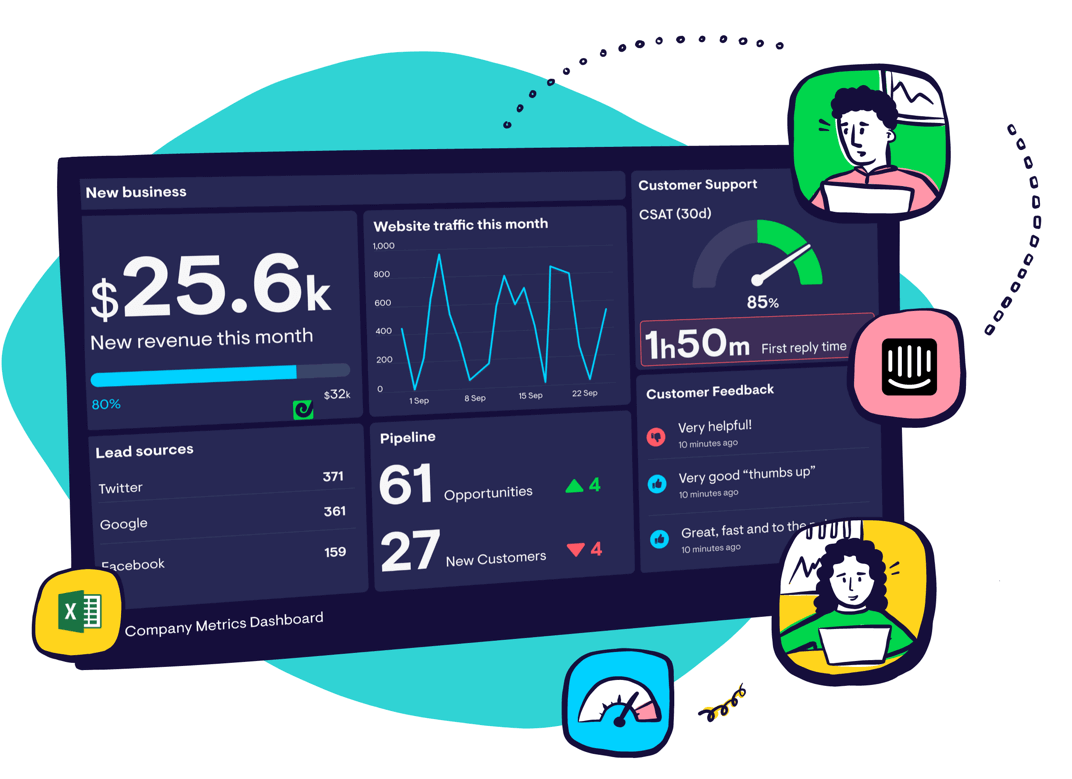Expansion MRR Rate
What is Expansion MRR Rate?
The SaaS Metric Expansion Monthly Recurring Revenue (MRR) Rate is additional recurring revenue generated from existing customers through either add-ons, upsells or cross-sells.
Advice from VCs: Why Expansion MRR Rate is critical
“Expansion MRR shows if the company can deliver more and more value to customers and monetize that value. Being able to generate expansion MRR is extremely valuable, especially longer term. Most of the best later-stage SaaS companies get a significant portion of their growth from existing customers.” - Christoph Janz, Co-founder & Managing Partner, Point Nine Angel VC
“Account expansion is a proxy for latent demand.” - Tom Tunguz, Partner at Redpoint Ventures
How to calculate Expansion MRR Rate:
[ ($) Total Expansion MRR at end of the month - ($) Total Expansion MRR at the beginning of the month ] / ($) Total Expansion MRR at the beginning of the month X 100 = (%) Expansion MRR Rate
To calculate the month over month revenue generated from expansion (i.e. upsells, cross-sells, and add-ons), subtract the total expansion MRR of the end of the month from the total expansion MRR at the beginning month. Then divide the result by the expansion MRR from the beginning of the month and multiply by 100 to create a percentage.
For example, if the expansion MRR at the beginning of the month is $1500 and then $2000 at the end of the month, the expansion MRR rate would be 33%.
($2000 - $1500) / $1500 X 100 = 33%
Pros:
When existing customers generate more recurring revenue for the company (i.e. they upgrade their account), it’s a great indicator they’re receiving more value and the product is generating more demand. Increasing expansion MRR is vital for long term sustainable growth since it often costs less than generating new business. This is why it’s important to measure the expansion MRR rate separate from net MRR churn rate where expansion and churn are combined in a single metric.
Cons:
As with other key SaaS metrics, tracking expansion MRR rate in isolation can be misleading - particularly if churn is also increasing.
Relevant SaaS Metrics and KPIs:
If you’re adding Expansion MRR Rate to your SaaS dashboard, you might want to also consider tracking these related SaaS metrics for context.
Industry Benchmarks
While there’s not a specific benchmark for Expansion MRR Rate, it’s good practice to aim for increasing it to exceed gross churn rate. When expansion exceeds gross churn, it’s called negative churn and can be calculated using Net MRR Churn Rate.
Additional Notes
“The highest correlated factor to post-money valuations for Series A SaaS companies isn’t revenue or revenue growth, but negative churn. Revenue growth correlates to post-money with a 0.18 R^2. Revenue correlates at 0.3 R^2. Negative churn, or account expansion, correlates at 0.54 R^2.” - Tom Tunguz, Partner at Redpoint Ventures
To learn more about the benefits of account expansion (or expansion MRR), read this post or this one on the importance of renewals.
